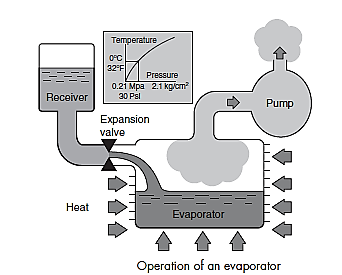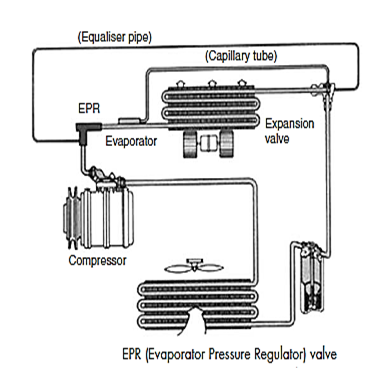SKEDSOFT
Introduction:
The evaporator is very similar in construction to a condenser. An evaporator will have a serpentine, tube and fin or parallel type construction.
Function of the evaporator:

- The evaporator is very similar in construction to a condenser.
- An evaporator will have a serpentine, tube and fin or parallel type construction. The function of an evaporator is to provide a large surface area to allow the warm often humid air to flow through it releasing its heat energy to the refrigerant inside.
- The refrigerant by this time will have just had a large pressure and temperature drop coming through the expansion/fixed orifice valve causing it to want to boil and just requiring the heat energy to do so. The evaporator absorbs the heat energy from the air flowing over its surface.
- The energy is transferred and the refrigerant reaches saturation point. At this point the refrigerant can still absorb a small amount of heat energy. The refrigerant will do so and become superheated.
- The superheated refrigerant will then flow to the compressor (TXV system) or accumulator (FOV system).
- The evaporator is extremely cold at this stage and any moisture in the air flowing through the evaporator will adhere to the evaporator’s surface.
- The water droplets on the surface help clean the incoming air by trapping dirt and foreign particles. The humidity content is also reduced so cleaner drier air is delivered to the interior of the vehicle.
- This improves the comfort level especially in high humid conditions and allows perspiration to evaporate more quickly. The moisture drips off the evaporator’s surface into a drain which directs it to the outside of the vehicle via a duct.
- Dehumidified air is very effective for window defogging due to a large number of passengers in a vehicle and/or humid conditions.
Design

- The design of an evaporator is based on the size, shape, number of tubes and fins and the number of rows.
- This is to maximize the flow rate and surface area.
- The evaporator is tested for the maximum amount of heat and moisture which can be removed by the evaporator within a given period.